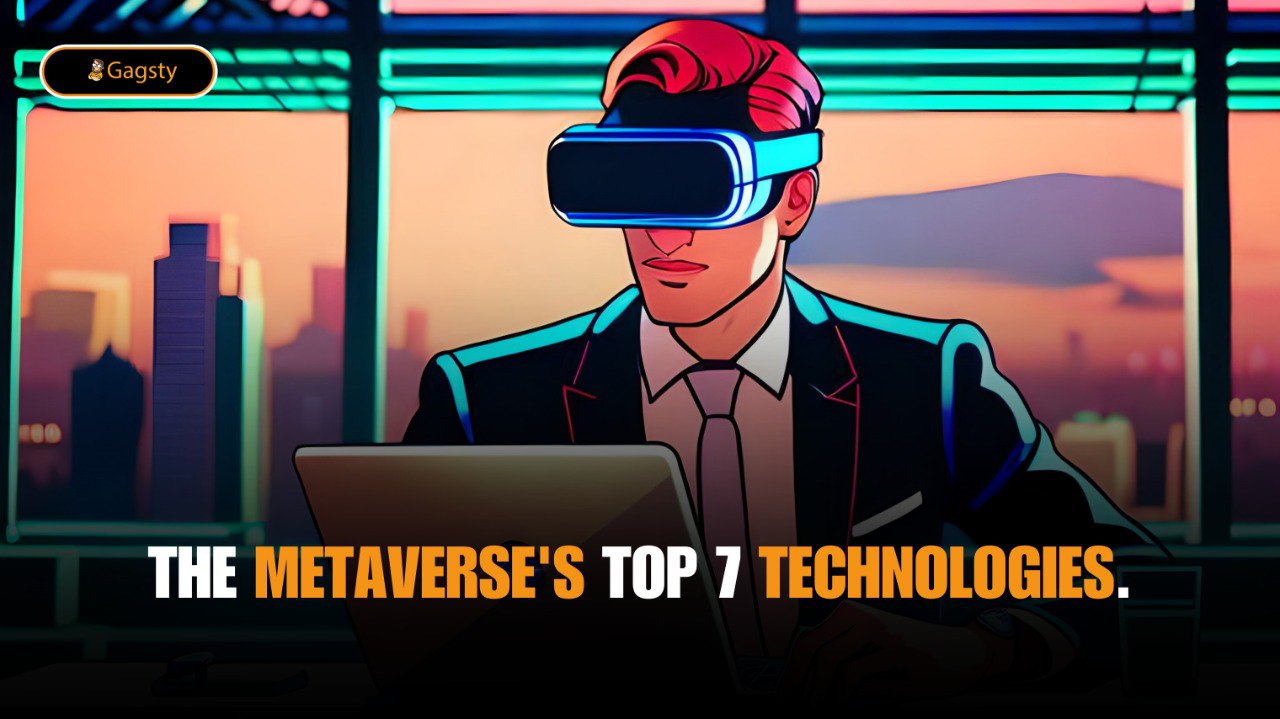
Introduction:.
The idea of the Metaverse has drawn a lot of attention recently, and it has the potential to revolutionize many aspects of our lives. The term “Metaverse” describes a virtual environment where users can interact with one another and digital content in real-time, resulting in rich and interesting experiences. The top seven technologies that support and facilitate the Metaverse’s functionality will be discussed in this tutorial.
VR stands for virtual reality.
In the Metaverse, immersive experiences are created in large part thanks to virtual reality technology. Users of VR headsets can enter and move around in virtual environments, creating a sense of presence and realism. The user can interact with the virtual world using hand gestures or game controllers thanks to these headsets that track their movements. By allowing users to interact and explore virtual spaces in a more engaging and natural way, VR technology improves the Metaverse.
AR stands for augmented reality.
By superimposing digital data on the physical world, augmented reality enhances the metaverse. Smart glasses or mobile phones that use augmented reality (AR) technology merge virtual and real world elements to improve the user’s perception and interaction. The Metaverse’s virtual and physical worlds are seamlessly integrated thanks to AR technology, which allows users to access digital content while being aware of their surroundings.
Technology based on blockchain.
The decentralized and secure infrastructure that blockchain technology provides is essential to the Metaverse. Blockchain makes it possible to create unique digital assets like non-fungible tokens (NFTs), which can stand in for real estate, identities, or other types of unique virtual property. Blockchain technology enables the secure acquisition, sale, and exchange of these assets, thereby confirming their authenticity and ownership. Furthermore, the decentralized nature of blockchain enables transparent and trustworthy transactions, promoting a thriving Metaverse economy.
AI stands for artificial intelligence.
By producing dynamic and intelligent virtual entities, artificial intelligence improves the metaverse. The virtual world will be more responsive and immersive thanks to AI algorithms that can create lifelike avatars, NPCs, and interactive environments. Therefore, AI-powered chatbots and assistants enable natural language interactions, enhancing user experiences and enabling personalized interactions within the Metaverse.
IoT stands for the Internet of Things.
The Internet of Things links tangible objects to the digital world, and its incorporation into the Metaverse improves functionality and interactivity. Users can control and keep an eye on physical objects inside the Metaverse thanks to Internet of Things (IoT) devices that are embedded in the real world and can communicate with the virtual one. Users can control their virtual environment or receive real-time information by connecting smart homes or wearable technology to the Metaverse, for instance.
Connectivity over 5G:.
High-speed and low-latency connectivity, which is essential for the immersive and real-time experiences of the Metaverse, is provided by fifth-generation (5G) wireless technology. High-quality VR and augmented reality content can stream seamlessly on 5G networks, which can also handle massive data transfers and minimize network lag. The Metaverse can now be accessed on a variety of devices, like smartphones or VR headsets, from anywhere thanks to 5G connectivity, which encourages widespread adoption and improves the user experience.
“Cloud computing”
Infrastructure for cloud computing is essential for the Metaverse’s scalability and accessibility. Cloud computing platforms offer the processing speed and storage space required for processing and rendering complex virtual environments. Additionally, by enabling real-time communication and information sharing between numerous users, cloud services enable collaborative experiences within the Metaverse. With more users and content being added, the Metaverse will be able to handle the rising demand and complexity thanks to its cloud-based infrastructure.
Conclusion:.
In-depth experiences, safe transactions, clever interactions, and seamless connectivity are all made possible by a combination of cutting-edge technologies that power the Metaverse. The top seven technologies that will have a major impact on how the Metaverse develops in the future include virtual reality, augmented reality, blockchain, artificial intelligence, the internet of things, 5G connectivity, and cloud computing. Developers and innovators can build a rich, vibrant virtual world with countless opportunities for communication, collaboration, entertainment, and more by utilizing these technologies.
Leave a Reply